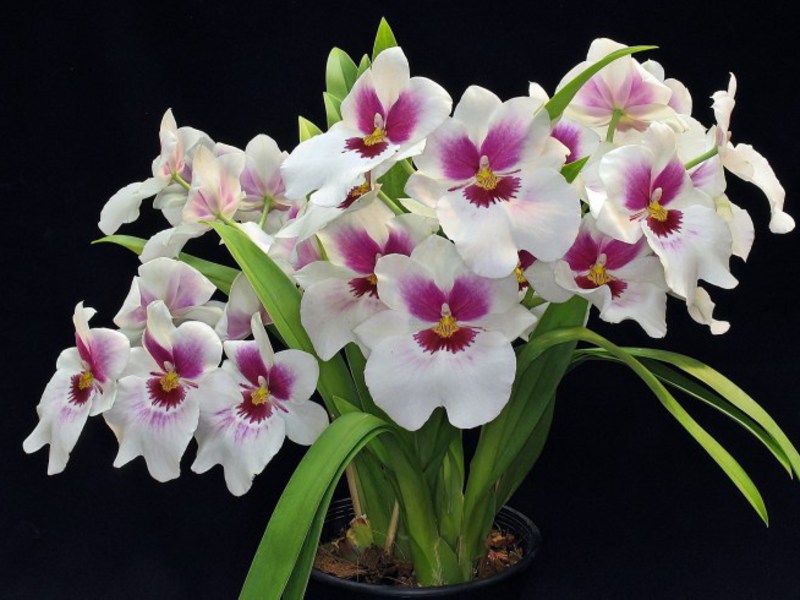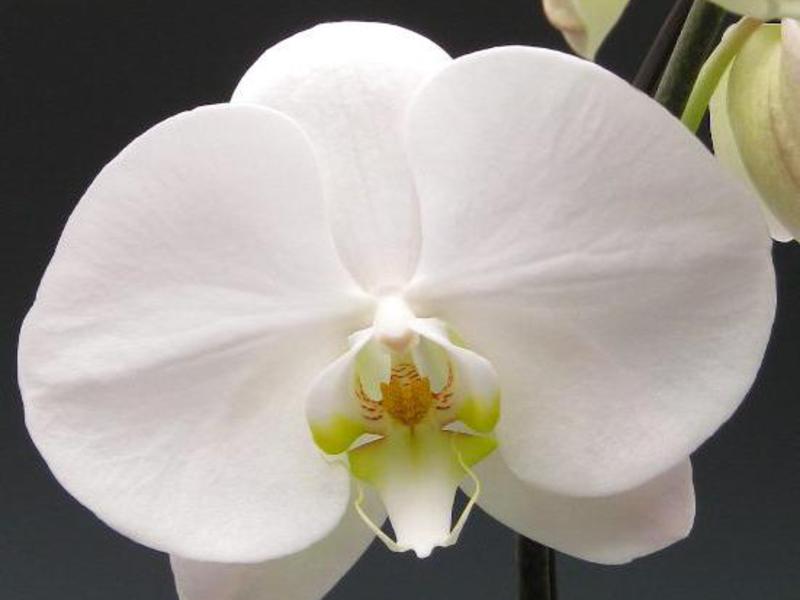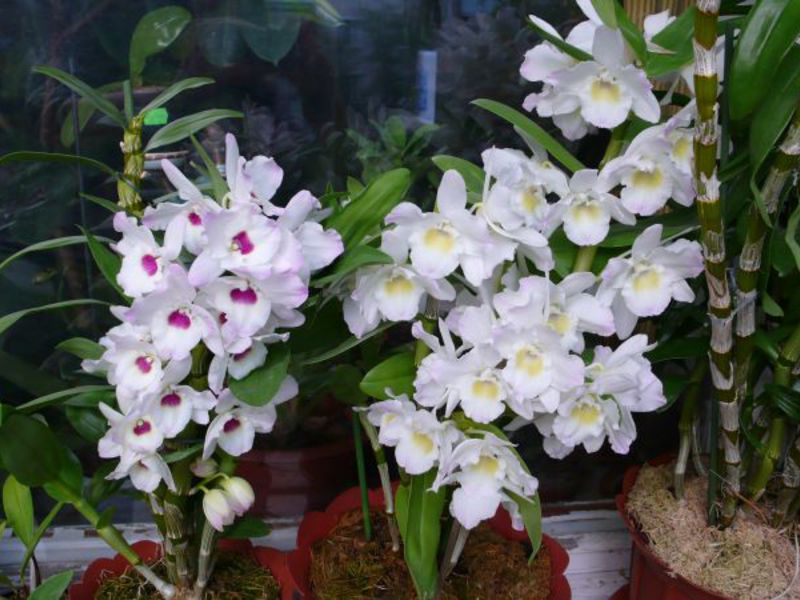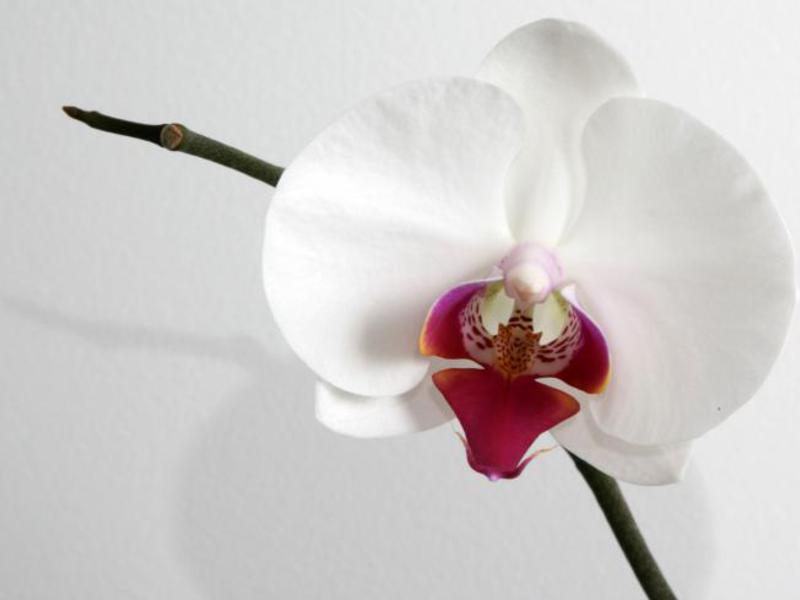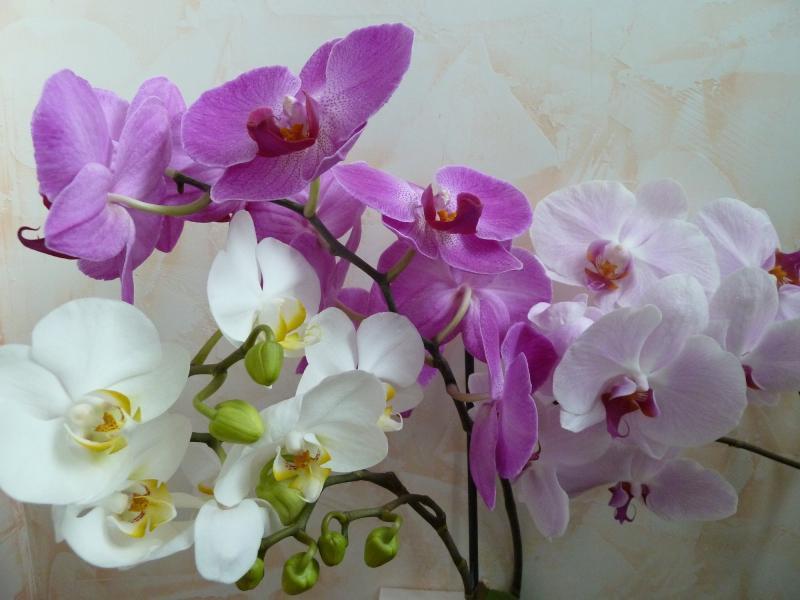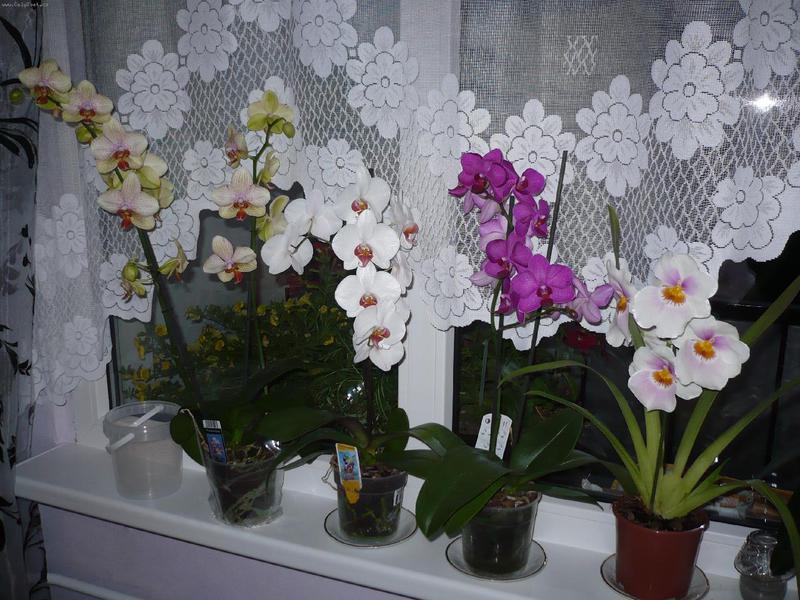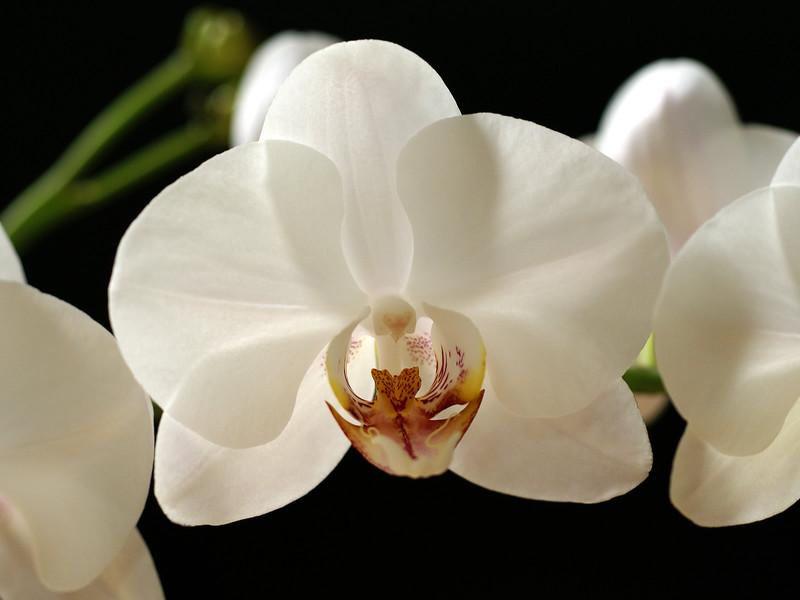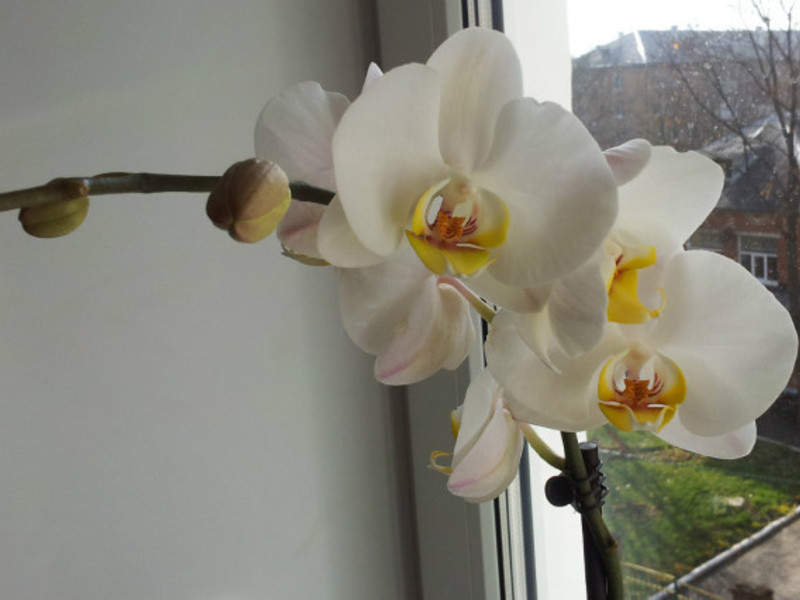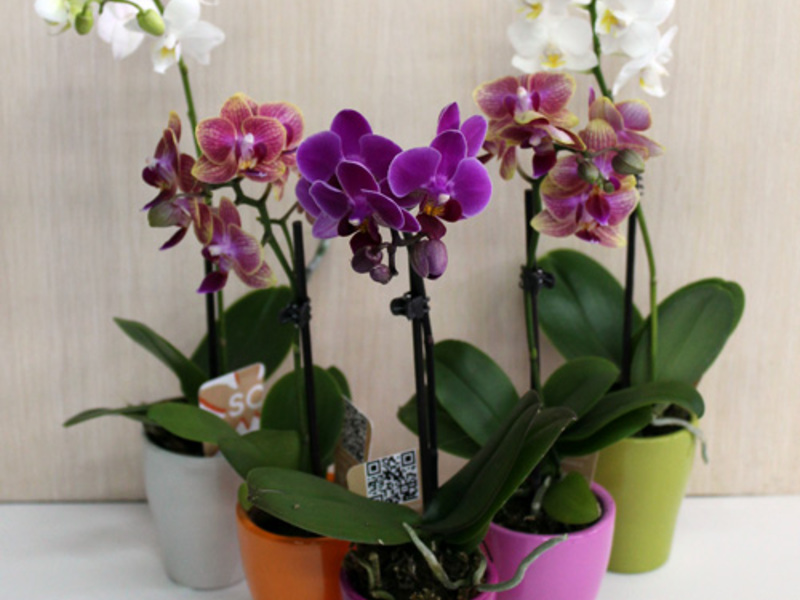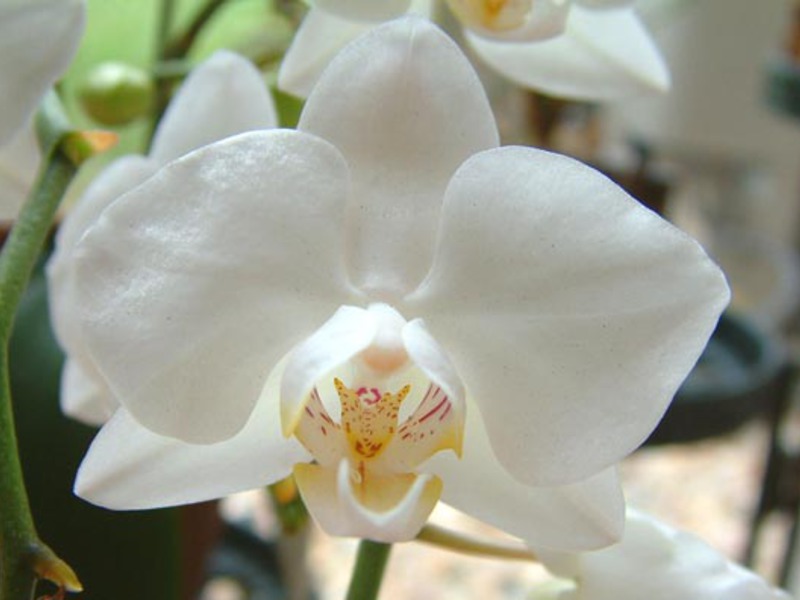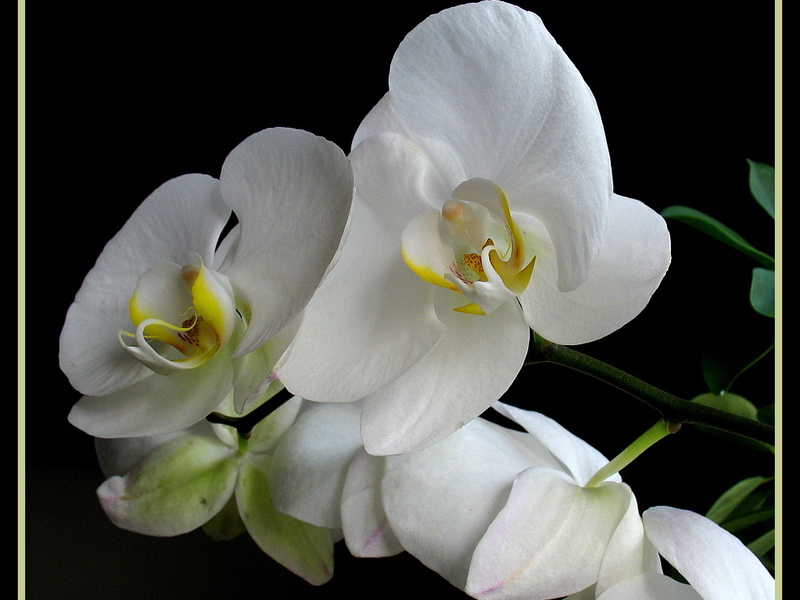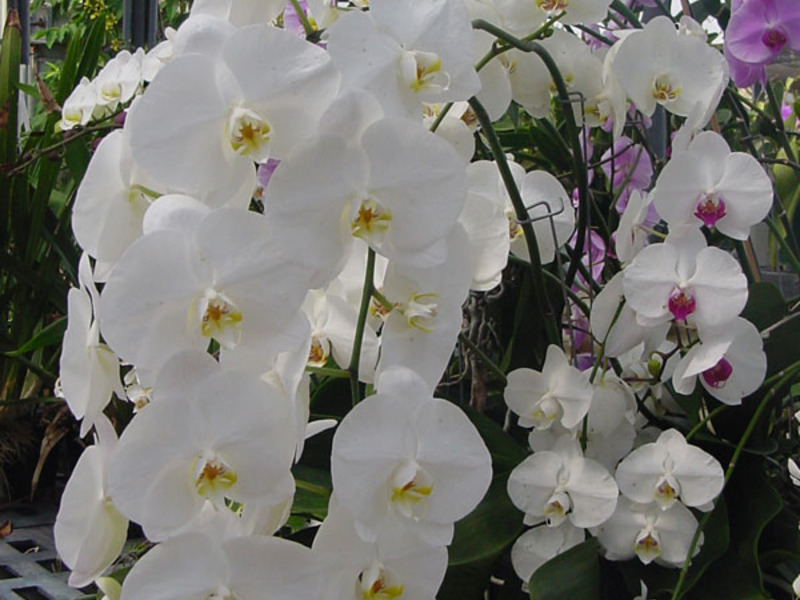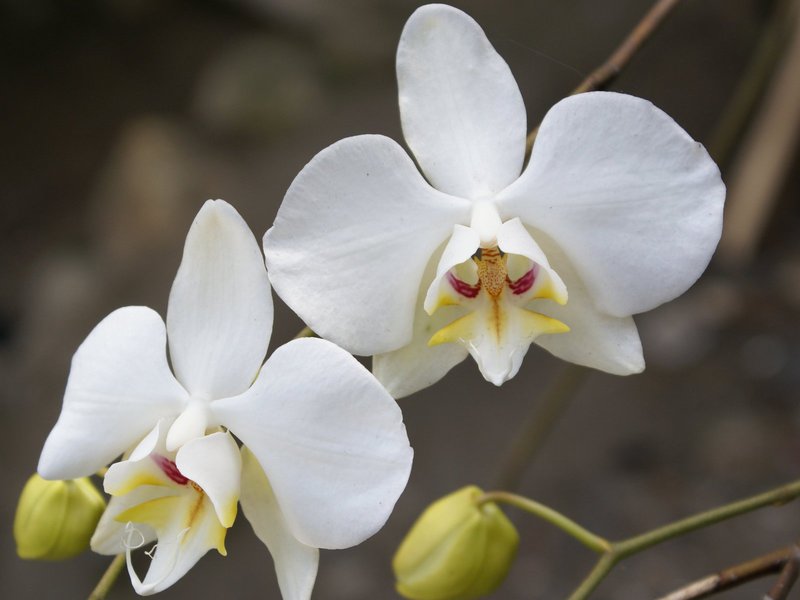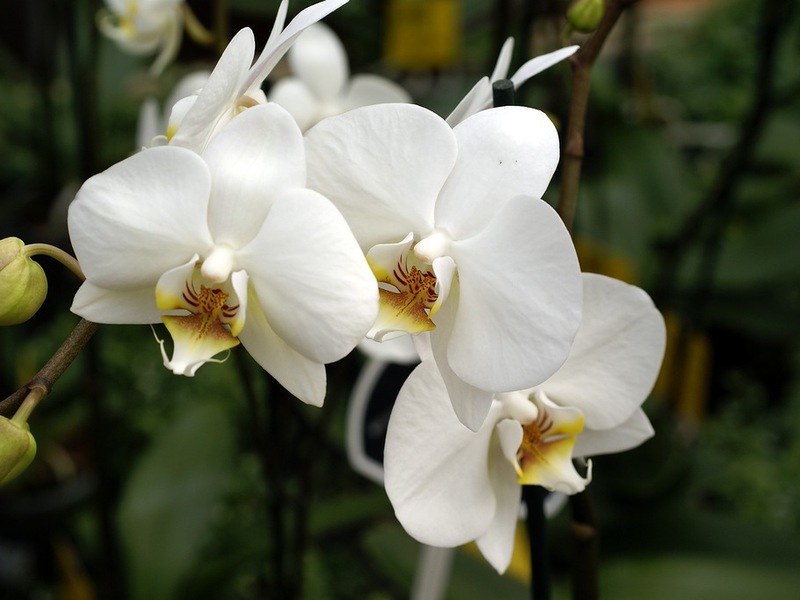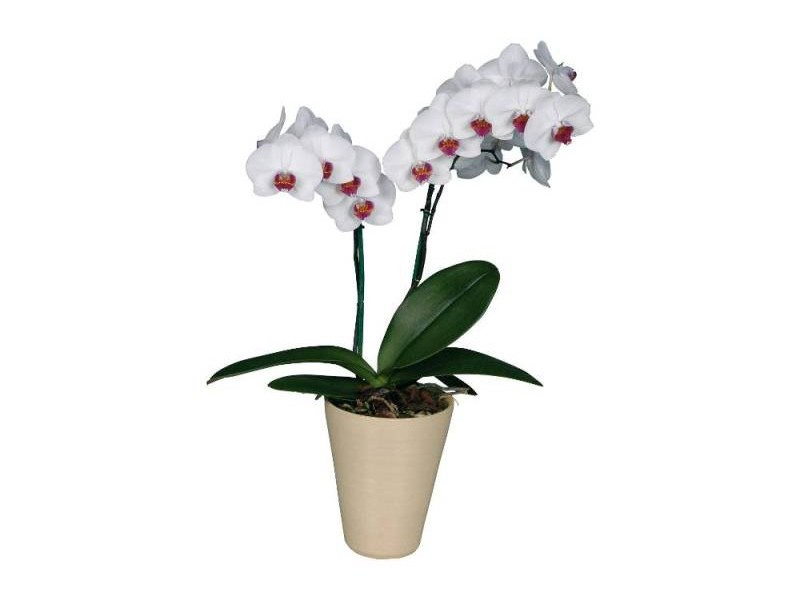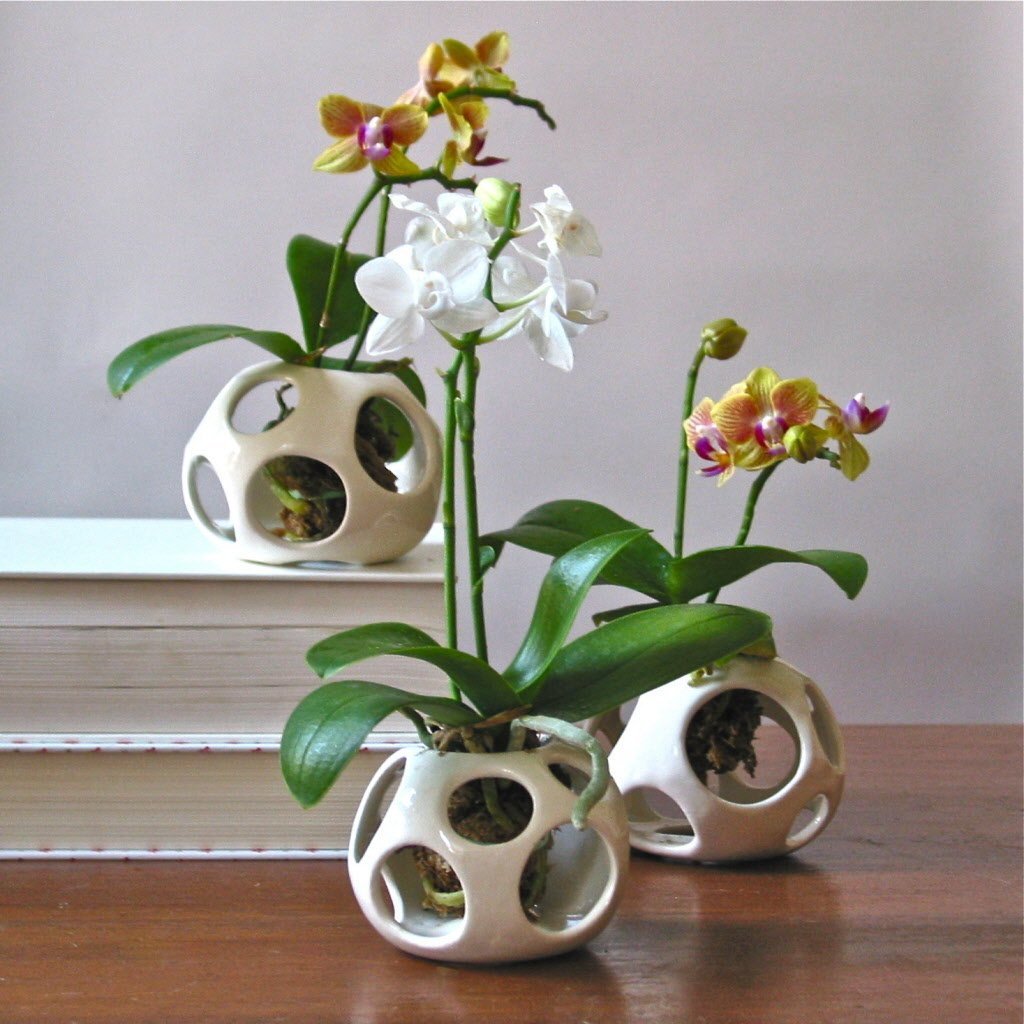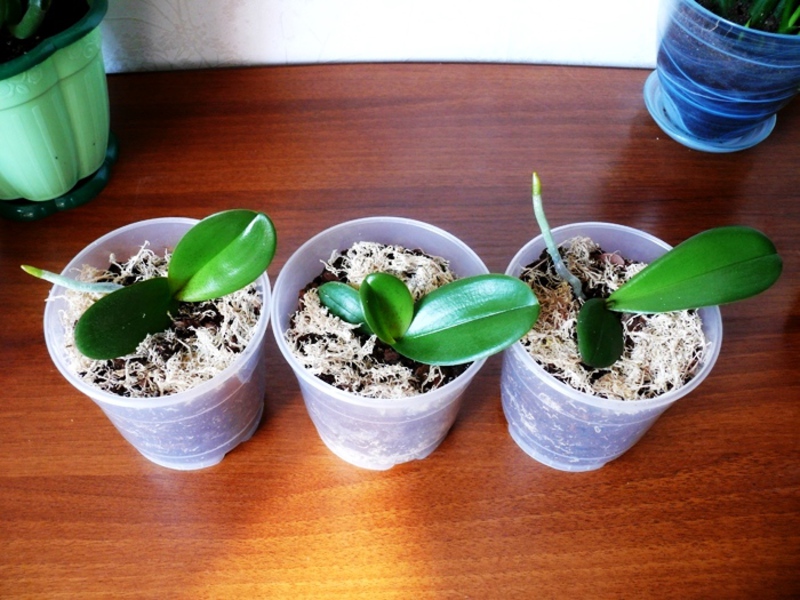White orchids are considered one of the most delicate and amazing plants. These flowers are grown in pots on windowsills in apartments and offices, they are used to decorate areas around private houses, they are used to create unique wedding bouquets.
Characteristics and features of white orchids
General information about the plant
Flowers were first discovered on one of the islands of the Malay Archipelago in 1750. Then the white orchid struck the Dutch botanist Blume with a visual resemblance to a whole swarm of butterflies, so the researcher and scientist gave it the name Phalaenopsis, which translated means "butterfly"... In apartments, they grow mainly miniature decorative phalaenopsis, the height of which ranges from 20 cm to 30 cm (photo attached), but in nature the plant height often reaches 100 cm (as in the photo below).
Most orchid species blooms almost throughout the year, which makes this plant extremely popular and even irreplaceable. However, these flowers also have a rather big drawback - they require constant and very careful care.
White orchid: photo, description
Like any other plant, Phalaenopsis has a number of unique characteristics. Distinctive features white orchids are shown below:
- inflorescences resemble butterflies;
- the height is 20–100 cm;
- the root system is large and well developed;
- dark green leaves are broad and lingual;
- flowering occurs three times during the year;
- a flower arrow forms at the base of the last of the formed leaves;
- pseudobulbs are absent;
- The most common flowers are white, pink, red, yellow and green (see photo).
White orchid care
Basic principles of plant care:
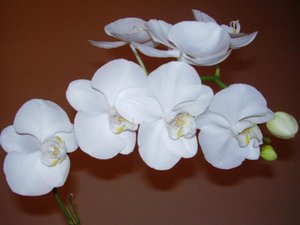 Buying a white orchid. Before purchasing a plant in a store, it must be carefully examined. A feature of a healthy phalaenopsis is the presence of light gray roots. After buying a plant, flower growers recommend immediately replanting it from a plastic pot and watering it with a solution of fungicides for prevention.
Buying a white orchid. Before purchasing a plant in a store, it must be carefully examined. A feature of a healthy phalaenopsis is the presence of light gray roots. After buying a plant, flower growers recommend immediately replanting it from a plastic pot and watering it with a solution of fungicides for prevention.- Choosing a place for a white orchid. The first step is to choose the right place for the flowers to grow. A window sill located in the eastern or southeastern part of the room would be ideal. The plant should also be carefully protected from the midday sun.
- Temperature conditions. Phalaenopsis is very sensitive to extremely low and high air temperatures. The optimum temperature for a plant during the day is 22-27 degrees Celsius, at night - 17-20 degrees Celsius. Like improper watering, non-observance of this temperature regime can cause the development of all kinds of diseases of the white orchid, lead to the formation of a fungus, rotting and cessation of the growth of the root system.
- Air humidity. White orchid loves high humidity, regardless of the chosen room or plot of land outside. That is why experienced flower growers recommend spraying both the plant itself and the space around it as often as possible. In this case, care must be taken not to allow water to enter the core of the rosette of the leaves, as this can lead to rotting.
- The need for a transplant. Phalaenopsis reproduces by numerous “babies” appearing on flower stems.When they reach a size of 5 cm, it means that the white orchid needs to be planted in another pot.
- Peduncle pruning. When the flowering of a white orchid passes along the main axis, it is necessary to start pruning, leaving a few buds at the rosette of leaves. Florists claim that this kind of procedure allows new peduncles to develop better from the buds remaining under the cut.
Transplant and feeding
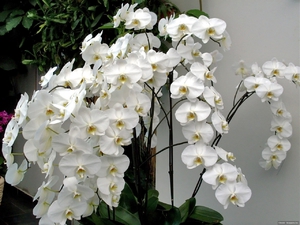 White orchid grows well in a loose and moisture-absorbing substrate, which most often represents the bark of old trees, mainly pine. At the same time, flower growers argue that for the healthy development of a plant, such a substrate should not contain resin, which has a detrimental effect on the white orchid.
White orchid grows well in a loose and moisture-absorbing substrate, which most often represents the bark of old trees, mainly pine. At the same time, flower growers argue that for the healthy development of a plant, such a substrate should not contain resin, which has a detrimental effect on the white orchid.
The bark of the tree must be thoroughly cleaned of the accumulated resinous substances, having previously boiled it for several minutes over low heat. Then the water should be drained, and the future substrate must be cooled and crushed to 1–2 cm. Further, the roots of the white orchid are cleaned of rotten and dry tips, after which the plant is placed in a prepared pot, and then covered with the substrate.
Immediately after transplanting the plant watering is not recommended, but it must be done the next day. In this case, it is necessary to use water with a minimum content of calcium salts and give preference to the method of immersing phalaenopsis in water.
White orchid also needs a lot of nutrients, so from time to time, you should feed it with useful micro and macro elements. For these purposes, florists recommend use special fertilizerswhich can be purchased at the flower shop.
Conclusion
The white orchid, also called phalaenopsis, is a very beautiful, exquisite, but also extremely whimsical plant with mesmerizing flowers. It requires careful maintenance and real care. Only in optimal conditions for this plant will Phalaenopsis delight the eye almost all year round.
